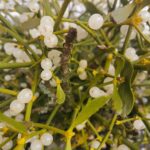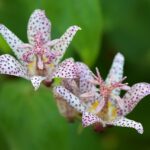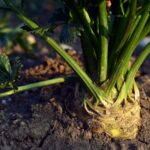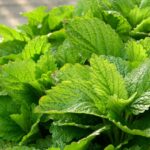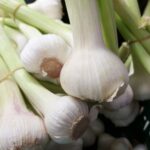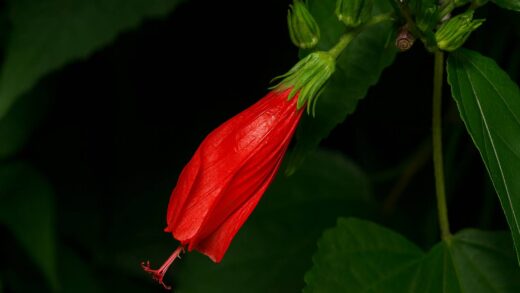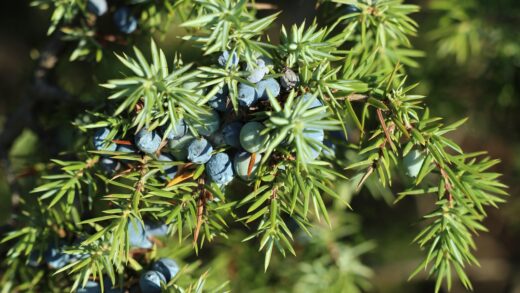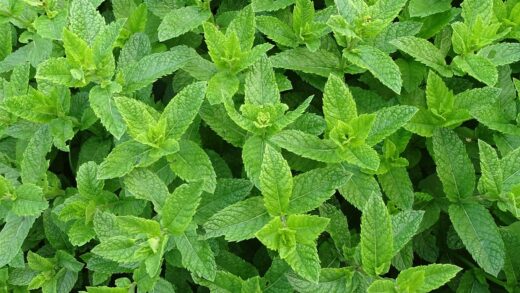The Hosta, also known as the plantain lily, is one of the most beloved shade-tolerant perennials in gardens, primarily valued for its stunning foliage. Successful overwintering is crucial for these plants to return stronger and more beautiful each year. Proper autumn preparations and winter protection ensure that the plant’s rhizomes (rootstocks) survive the cold months unscathed and sprout with renewed vigor in the spring. The overwintering process is not complicated, but adhering to a few basic rules is essential for maintaining the plant’s health. This process includes the proper timing of nutrient supply, managing the foliage, and winterizing the soil and the plant’s environment.
Preparation for overwintering begins in early autumn as the plant’s life rhythm naturally slows down. As the days shorten and temperatures drop, the Hosta directs its energy not into growing leaves but into its rhizomes, preparing for the dormant period. At this stage, it is crucial to gradually reduce watering, allowing the top layer of soil to dry out between waterings. Excessive moisture during this time can lead to root rot, which can cause the plant’s demise during the winter months. The yellowing and wilting of the leaves is a natural process, indicating that the plant is successfully withdrawing nutrients into its underground storage organs.
Many gardeners wonder whether to remove the autumn foliage or not. Both approaches have their advantages. If the leaves are left on the plant, they act as a natural blanket, protecting the rhizome from frost and temperature fluctuations, and the decomposing foliage enriches the soil with valuable nutrients. However, the damp, dead foliage can provide an ideal hiding place and food for slugs and other pests, as well as their eggs, and for fungal disease spores. From a professional standpoint, the safest solution is to wait until the leaves are completely dry and brown, then cut them back a few centimeters above ground level after the first hard frost, thus minimizing the risk of diseases overwintering.
Autumn nutrient supplementation is another critical element of preparation. During this period, high-nitrogen fertilizers should be avoided, as they would stimulate new shoot growth, which would be extremely detrimental to the plant as frosts approach. Instead, the application of potassium and phosphorus-rich formulas is recommended. Potassium strengthens cell walls and improves the plant’s frost tolerance, while phosphorus supports the healthy development of the root system, in this case, the rhizome, and energy storage for the spring. A thin layer of mature compost or organic manure spread around the plant is also an excellent choice, which slowly releases nutrients into the soil with the help of winter precipitation.
One of the final steps before overwintering is checking the soil condition and giving a thorough, final watering. Before the ground freezes solid, it is important to perform a deep watering so that the soil around the rhizomes is sufficiently moist. This may sound paradoxical, but moist soil retains heat better than dry soil and protects the roots from desiccation during frosty, windy periods. At the same time, ensuring good drainage is essential, as standing water during winter thaws can easily lead to rhizome rot. In the case of clayey, compacted soil, it is advisable to loosen the area around the plant with sand or compost for better drainage.
More articles on this topic
Protecting garden-planted Hostas during the winter months
Hostas planted in the ground that have been established for several years generally have excellent frost tolerance and can survive typical winters without special protection. However, the key to success is proper insulation, which is most easily achieved by mulching. The primary purpose of the mulch layer is not to keep the soil warm, but to stabilize its temperature and mitigate the harmful effects of sudden freeze-thaw cycles. This prevents the plant from sprouting prematurely on a mild winter day, only to have the tender new shoots damaged by a sudden return of frost. Mulch also helps to retain soil moisture and keep the area weed-free.
Many materials are suitable for mulching, but it is important to choose one that has an airy structure and does not compact into a wet, soggy layer. Fallen leaves (especially oak leaves, which decompose slowly), straw, pine bark, wood chips, or mature compost are excellent for this purpose. Grass clippings should be avoided as they tend to stick together and form an airless layer, which can lead to rot. The ideal mulch layer thickness is about 10-15 centimeters, which provides sufficient insulation for the rhizomes. The mulch should be spread around the dried remains of the plant, but not piled directly onto the plant’s crown to avoid causing rot.
The ideal time to apply mulch is after the first hard frost, when the top layer of the soil has already hardened slightly. If mulching is done too early, it creates a warm, moist environment that attracts rodents and other pests seeking shelter for the winter, who may in turn damage the Hosta rhizomes. Applying mulch too late carries the risk that the soil has already frozen too deeply, and the cover can no longer exert its insulating effect effectively. The goal is to cover the already cooled soil, preventing it from freezing deeper and experiencing temperature fluctuations.
Special attention should be paid to young, newly planted, and shallow-rooted or more sensitive varieties, especially in regions with harsh climates or little snow cover. Snow is an excellent natural insulator, so in its absence, plants are more exposed to frost. In these cases, in addition to a thicker layer of mulch, it may be worthwhile to place pine boughs over the plants, which help to trap wind-blown snow and provide additional insulation. Hostas grown in raised beds are also more vulnerable as their soil is more exposed to the cold, so mulching is particularly important here.
More articles on this topic
Special tricks for overwintering potted Hostas
Overwintering Hostas grown in pots or containers requires significantly more attention than their garden-planted counterparts. This is because in a pot, the plant’s root system is exposed to the cold from all sides, unlike garden plants that benefit from the insulating effect of the soil. In a pot, the entire root ball can freeze solid, which can lead to the death of the roots and the plant. Therefore, potted Hostas should not simply be left outdoors for the winter months; their proper, protected placement must be ensured. The goal is to provide a location where the temperature remains near freezing but does not drop deeply and persistently below it.
The ideal overwintering location could be an unheated garage, a cold cellar, a shed, or a protected, covered porch. The key is for the space to be cool and preferably dark, where the temperature remains stable between 0 and 5 degrees Celsius. This temperature is low enough to keep the plant dormant but high enough to prevent the root ball from freezing completely. It is important to avoid heated rooms, such as the living space, because the warmth and light would interrupt the plant’s dormant period, triggering premature, weak shoot growth that would deplete the plant’s reserves.
Before moving the pots to their overwintering location, a few preparatory steps must be taken. Allow the plant’s leaves to die back naturally, then cut them off above the soil. During overwintering, the plant needs minimal water, so watering should be drastically reduced. The soil should be just slightly moist, but by no means wet, as excessive moisture in the cold will surely lead to root rot. Before bringing the pots inside, thoroughly inspect them for pests, such as slug eggs or slugs, on the pots or in the soil, which you do not want to proliferate in the overwintering space.
If a suitable unheated space is not available, there is another effective method known as “trenching” or the “pot-in-garden” method. This involves digging a hole in a sheltered, well-drained spot in the garden large enough to comfortably fit the pot up to its rim. The pot is placed in the hole, and the space around it is filled with soil or mulch. Then, the top of the pot and the plant’s remains are thickly covered with mulch, just as you would for garden-planted counterparts. This method utilizes the natural insulating capacity of the earth to protect the root ball from freezing, while the plant can remain outdoors.
Spring wake-up and common mistakes during overwintering
As spring arrives, with temperatures beginning to rise and days growing longer, it’s time to “wake up” the Hostas. For garden-planted specimens, the timing of removing the winter cover, or mulch layer, is crucial. This should be done gradually, once the danger of hard frost has passed, but before the new shoots, the so-called “pips,” appear on the soil surface. If the cover is removed too early, the delicate new shoots can be exposed to a late frost, which can cause serious damage. Conversely, if the thick mulch is left on the plant for too long, it can inhibit shoot growth and, in the moist, warming environment, promote rot and the proliferation of slugs.
Waking up potted Hostas also requires care. As the spring weather begins to warm up, the plants should be gradually acclimated from their dark, cold overwintering location to warmer, brighter conditions. First, move them to a sheltered, shadier outdoor spot, such as a north-facing patio. Watering should also be restarted cautiously, with small amounts, and the quantity of water should only be increased when strong growth of new shoots is visible. Sudden, intense sunlight or overwatering can shock the plant, scorching the young leaves or causing root rot.
Several common mistakes can be made during overwintering that can lead to the weakening or even death of the plant. One of the most common errors is overwatering potted plants during their dormant period, which almost certainly leads to rot in the cold, airless medium. In the garden, the main problem is insufficient insulation, meaning a lack or thinness of the mulch layer, which can cause frost damage to the rhizomes. It is also a mistake to try to overwinter potted plants in a location that is too warm, as this disrupts the vital dormant period. Additionally, many people forget about pest control, allowing slugs and other unwanted creatures to overwinter with the plant and launch an attack immediately in the spring.
After winter has passed, it is worthwhile to assess any potential damage and give the plants a spring boost. Carefully inspect the rhizomes, especially if the plant appears weak. If you find soft, mushy, or rotted parts, remove them with a sharp, sterilized knife to prevent the spread of infection. When the first shoots appear, give the plant a balanced, nitrogen-rich liquid fertilizer or sprinkle a slow-release fertilizer around its base to support the development of lush foliage. Careful overwintering and a professional spring start guarantee that your Hostas will be the pride of your garden all year round.



